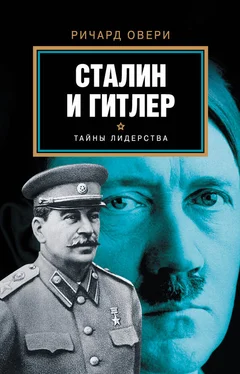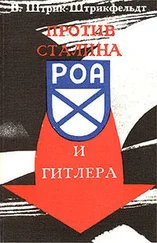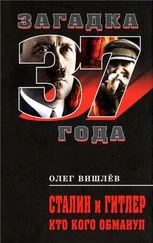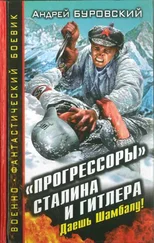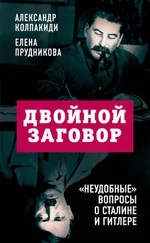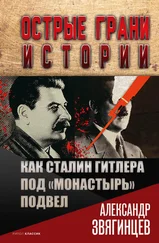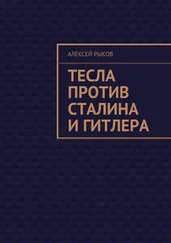38. Nekrich, Pariahsy Partners, pp. 228–9.
39. Glantz, Stumbling Colossus, pp. 239–43.
40. G. F. Krivosheev Soviet Casualties and Combat Losses in the Twentieth Century (London, 1997), p. 98; R. Stolfi Hitler’s Panzers East: World War II Reinterpreted (Norman, Okl., 1991), pp. 88–9; A. G. Chor’kov ‘The Red Army during the Initial Phase of the Great Patriotic War’, in Wegner, From Peace to War, p. 416.
41. For details see D. M. Glantz Before Stalingrad: Barbarossa – Hitler’s Invasion of Russia 1941 (Stroud, 2003), chs 7–8; Trevor-Roper, Hitler’s War Directives, pp. 152–5, Directive no. 35, 6 September 1941.
42. J. Toland Adolf Hitler (London, 1976), pp. 684–5.
43. V. P. Yampolsky (ed.) Organy Gosudarstvennoi Bezopasnosti SSSR v Velikoi Otechestvennoi voine (Moscow, 2000), vol. ii, pp. 98–104.
44. Yampolsky, Organy, p. 107.
45. D. Volkogonov Stalin: Triumph and Tragedy (London, 1991), pp. 434–5; G. A. Bordiugov The Popular Mood in the Unoccupied Soviet Union’, in R. Thurston and B. Bonwetsch (eds) The People’s War: Responses to World War II in the Soviet Union (Chicago, 2000), pp. 58–9; M. M. Gorinov ‘Muscovites’ Moods, 22 June 1941 to May 1942’, in Thurston and Bonwetsch, People’s War, pp. 123–4; J. Barber ‘The Moscow Crisis of October 1941’, in J. Cooper, M. Perrie and E. A. Rees (eds) Soviet History 1917–1953: Essays in Honour ofR.W. Davies (London, 1995), pp. 201–18.
46. M. Cooper The German Army 1933–1945 (London, 1978), p. 344.
47. Alt, ‘Die Wehrmacht’, p. 111.
48. Kriegstagebuch des Oberkommandos der Wehrmacht 5 vols (Frankfurt am Main, 1961–3), vol. i, pp. 1120–21; Soviet fi gures calculated from J. Erickson ‘Soviet War Losses’, in J. Erickson and D. Dilks (eds) Barbarossa: the Axis and the Allies (Edinburgh, 1994), pp. 264–5.
49. E. Zaleski Stalinist Planning for Economic Growth 1933–1952 (London, 1980), p. 291; S. Linz ‘World War II and Soviet Economic Growth, 1940–1953’, in S. Linz (ed.) The Impact of World War II on the Soviet Union (Totowa, NJ, 1985)” p. 13.
50. W. S. Dunn The Soviet Economy and the Red Army 1930–1945 (London, 1995), p. 195.
51. Linz, ‘Soviet Economic Growth’, p. 18; Imperial War Museum, London, FD 3056/49 ‘Statistical Material on the German Manpower Position During the War’, 31 July 1945. These fi gures are based on the annual labour balances produced by the
Reich Statistical Offi ce. The German manpower fi gure includes those classifi ed as ‘handworkers’ as well. Industrial wage-earners numbered 8.37 million in 1942.
52. S. R. Lieberman ‘Crisis Management in the USSR: The Wartime System of Administration and Control’, in Linz, Impact of World War II, pp. 60–61.
53. Zaleski, Stalinist Planning, pp. 287–8; M. Harrison Soviet Planning in Peaceand War, 1938–1945 (Cambridge, 1985), pp. 94–9; Lieberman, ‘Crisis Management’, pp. 60–66.
54. Zaleski, Stalinist Planning, pp. 286, 289–90.
55. Zaleski, Stalinist Planning, p. 317; M. Harrison ‘The Soviet Union: the defeated victor’, in M. Harrison (ed.) The Economics of World War II: Six great powers in international comparison (Cambridge, 1998), pp. 275–8.
56. Linz, ‘Soviet Economic Growth’, p. 20; Harrison, ‘The Soviet Union’, p. 286.
57. F. Kagan ‘The Evacuation of Soviet Industry in the Wake of Barbarossa: a Key to Soviet Victory’, Journal of Slavic Military Studies, 8 (1995), pp. 389–406; G. A. Kumanev ‘The Soviet Economy and the 1941 Evacuation’, in J. L. Wieczynski (ed.) Operation Barbarossa: The German Attack on the Soviet Union, June 22 1941 (Salt Lake City, 1993), pp. 161–81, 189.
58. Linz, ‘Soviet Economic Growth’, p. 17 on investment; on schools M. Hindus Russia Fights On (London, 1942), pp. 63–4; W. Moskoff The Bread of Affl iction: The Food Supply in the USSR during World War II (Cambridge, 1990), p. 83.
59. Linz, ‘Soviet Economic Growth’, pp. 19–20; J. Barber and M. Harrison The Soviet Home Front 1941–1945 (London, 1991), pp. 147–52 on labour mobilization. On rationing Zaleski, Stalinist Planning, pp. 328–30; Moskoff, Bread of Affl iction, pp. 143–55; Barber and Harrison, Soviet Home Front, pp. 214–15 for ration levels in 1944.
60. Zaleski, Stalinist Planning, pp. 333, 336–7; Moskoff, Bread of Affl iction, pp. 108–9, 175.
61. Moskoff, Bread of Affl iction, pp. 136–42.
62. A. Nove ‘The peasantry in World War II’, in Linz, Impact of World War II, pp. 79–84.
63. Zaleski, Stalinist Planning, pp. 337–40.
64. B. V. Sokolov ‘Lend Lease in Soviet Military Efforts 1941–1945’, Journal of Slavic Military Studies, 7 (1994), pp. 567–8.
65. Sokolov, ‘Lend Lease’, pp. 570–81; V. Vorsin ‘Motor Vehicle Transport Deliveries Through “Lend-Lease”’, Journal of Slavic Military Studies, 10 (1997), pp. 164, 172–3; H. P. van Tuyll Feeding the Bear: American Aid to the Soviet Union 1941–1945 (New York, 1989), pp. 156–7.
66. U. Herbert Fremdarbeiter: Politik und Praxis des ‘Ausländer-Einsatzes’ in der Kriegswirtschaft des Dritten Reiches (Berlin, 1985), pp. 270–72.
67. The term was used by Rolf Wagenführ, a Reich Statistical Offi ce offi cial, when he wrote a history of the German war economy for the Allies in 1945. See IWM, FD 3057/49 FIAT Report 1312 ‘Economic History of the Second World War’, pp. 6–8.
68. Hitler’s plan in IWM, MI 14/521 (Part I) ‘Munitionslieferung im Weltkrieg’; War Economy decree Reichsgesetzblatt 1939, Part I, p. 1609 ‘Kriegswirtschaftsverordnung’, 4 September 1939. Total war references in Bundesarchiv-Berlin R2501/7132, Reichsbank, notes for a speech by Director Lange, November 1941; R2501/7041, Report of speech by Reichsbank President 2 February 1940, p. 2.
69. R. J. Overy War and Economy in the Third Reich (Oxford, 1994), pp. 275–81; Soviet comparison in Harrison, ‘The Soviet Union’, p. 291.
70. Overy, War and Economyp, p. 352.
71. IWM, EDS Mi 14/433 (fi le 2), Führer decree ‘Vereinfachung und Leistungssteigerung unserer Rüstungsproduktion’, 3 December 1941, p. 1.
72. IWM AL/1571, Col. Thomas, ‘Aktennotiz über Besprechung mit Minister Speer, 3 March 1942’, p. 1.
73. Overy, War and Economy, pp. 356–64.
74. D. Winkler Frauenarbeit im ‘Dritten Reich’ (Hamburg, 1977), pp. 196–8; S. Bajohr Die Hälfte der Fabrik: Geschichte der Frauenarbeit in Deutschland 1914 bis 1945 (Marburg, 1979), p. 252; R. Wagenführ Die deutsche Industrie im Kriege (Berlin, 1963), pp. 145–7; F. Wunderlich Farm Labor in Germany 1810–1945 (Princeton, NJ, 1961), pp. 297–9; on part time work IWM Box S368, Report 69, p. 5. See too E. Hancock ‘Employment in Wartime: the experience of German women during the Second World War’, War & Society, 12(1994), pp.43–68.
75. On rationing see Overy, War and Economy, pp. 170–71, 282–4; H. Focke and U. Reimer Alltag unterm Hakenkreuz: Wie die Nazis das Leben der Deutschen veränderten (Hamburg, 1980), pp. 179–81.
76. L. Maks Russia by the Back Door (London, 1954), p. 169.
77. C. Simmons and N. Perlina Writing the Siege of Leningrad: Women’s diaries, memoirs and documentary prose (Pittsburgh, 2002), p. 23, diary of Liubov Shaporina, 12 September 1941.
78. Simmons and Perlina, Siege of Leningrad, p. 60, diary of Anna Likhacheva, 16 May, 1942; p. 50, diary of Vera Kostrovitsknia [n.d.].
79. Simmons and Perlina, Siege of Leningrad, pp. 30–31, diary entry, 8 March 1942.
80. See O. Bartov The Eastern Front 1941–1945: German Troops and the Barbarization of Warfare (New York, 1985).
81. See in general T. Schulte The German Army and Nazi Policies in Occupied Russia (Oxford, 1989); H. Heer Tote Zonen: Die deutsche Wehrmacht an der Ostfront (Hamburg, 1999); H. Heer and K. Naumann (eds) Vernichtungskrieg, Verbrechen der Wehrmacht 1941–1944 (Hamburg, 1995). On the debate over Wehrmacht criminality K. H. Pohl ‘“Vernichtungskrieg. Verbrechen der Wehrmacht 1941–1944’, in K. H. Pohl (ed.) Wehrmacht und Vernichtungspolitik. Militär im nationalsozialistischen System (Göttingen, (1999), pp. 141–60.
Читать дальше
Конец ознакомительного отрывка
Купить книгу
